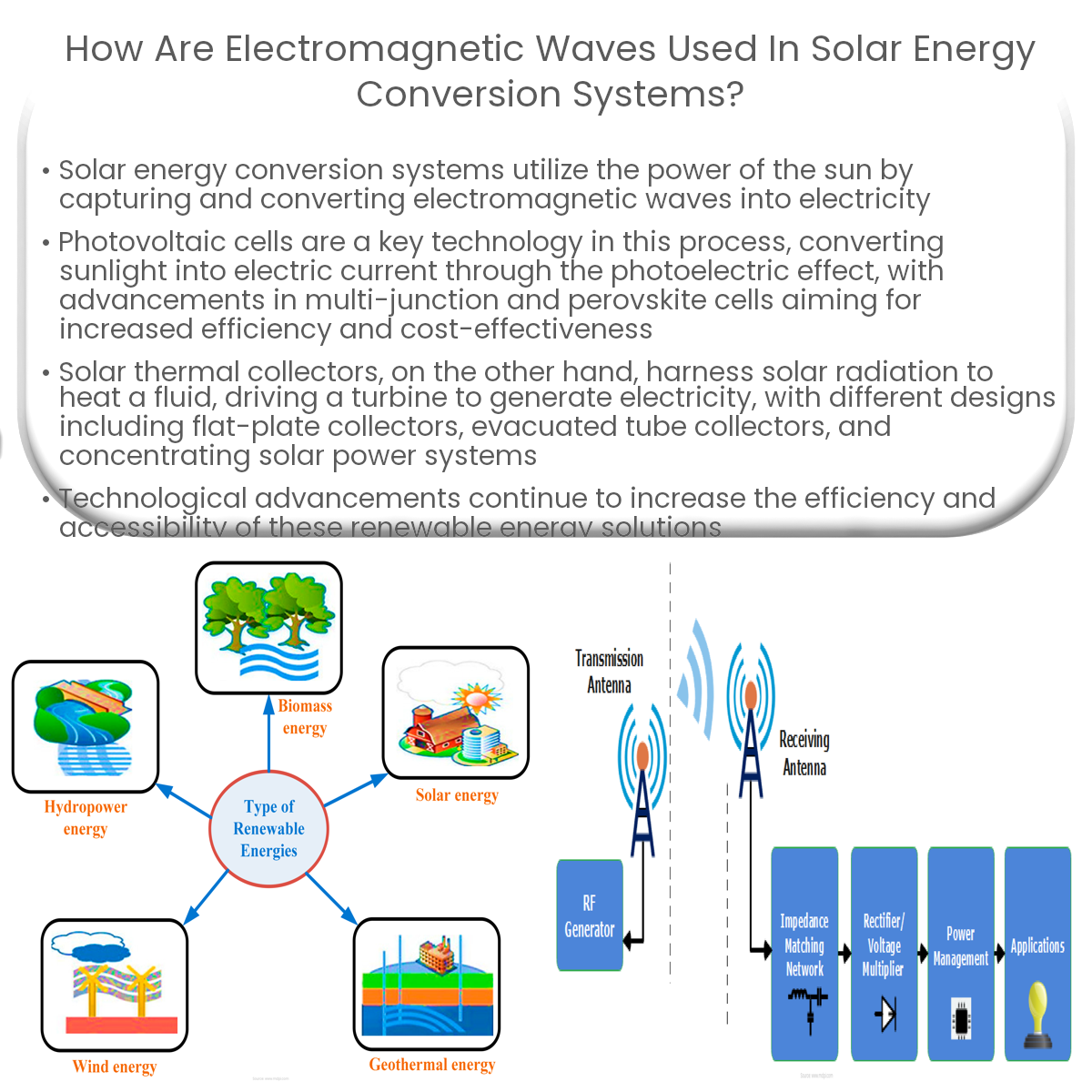Electromagnetic waves are used in solar energy systems to convert sunlight into electricity through photovoltaic cells or heat fluids in solar thermal collectors.
Electromagnetic Waves in Solar Energy Conversion Systems
Solar energy conversion systems are at the forefront of renewable energy technology, harnessing the power of the sun to generate electricity. A key aspect of these systems is their ability to capture and convert electromagnetic waves, specifically solar radiation, into usable energy. In this article, we will explore the role of electromagnetic waves in solar energy conversion systems, focusing on photovoltaic cells and solar thermal collectors.
Photovoltaic Cells
Photovoltaic (PV) cells, commonly known as solar cells, are the primary technology used to convert sunlight into electricity. PV cells are made of semiconductor materials, with silicon being the most common choice. Electromagnetic waves, specifically photons from the sun’s light, are absorbed by these materials and generate a flow of electrons, resulting in an electric current.
Photoelectric Effect : The process of converting sunlight into electricity is based on the photoelectric effect, a phenomenon observed when photons strike the surface of a material and displace electrons.Multi-junction Cells : To increase efficiency, some PV cells employ a multi-junction design, capturing different wavelengths of light by using multiple layers of semiconductor materials.Perovskite Solar Cells : An emerging technology, perovskite solar cells, show promise for improved efficiency and reduced manufacturing costs, making solar energy more accessible and affordable.
Solar Thermal Collectors
Solar thermal collectors are another way of utilizing the power of electromagnetic waves in solar energy systems. Unlike photovoltaic cells that convert sunlight directly into electricity, solar thermal collectors harness solar radiation to heat a fluid, which is then used to produce steam and drive a turbine, generating electricity.
Flat-Plate Collectors : These collectors consist of an absorber plate, a transparent cover, and insulation. Solar radiation heats the absorber plate, transferring the heat to a working fluid that circulates through tubes embedded in the collector.Evacuated Tube Collectors : These collectors feature a series of glass tubes, each containing an absorber plate and a vacuum to minimize heat loss. The working fluid is heated as it circulates through the tubes, providing higher efficiency than flat-plate collectors.Concentrating Solar Power (CSP) : CSP systems use mirrors or lenses to concentrate sunlight onto a small area, significantly increasing the intensity of the electromagnetic waves and the heat generated. The heated fluid is used to produce steam, which drives a turbine to generate electricity.
In conclusion, electromagnetic waves play a vital role in solar energy conversion systems, allowing us to capture and convert the sun’s energy into electricity. As technology continues to advance, we can expect more efficient and accessible solutions for harnessing this renewable energy source.


